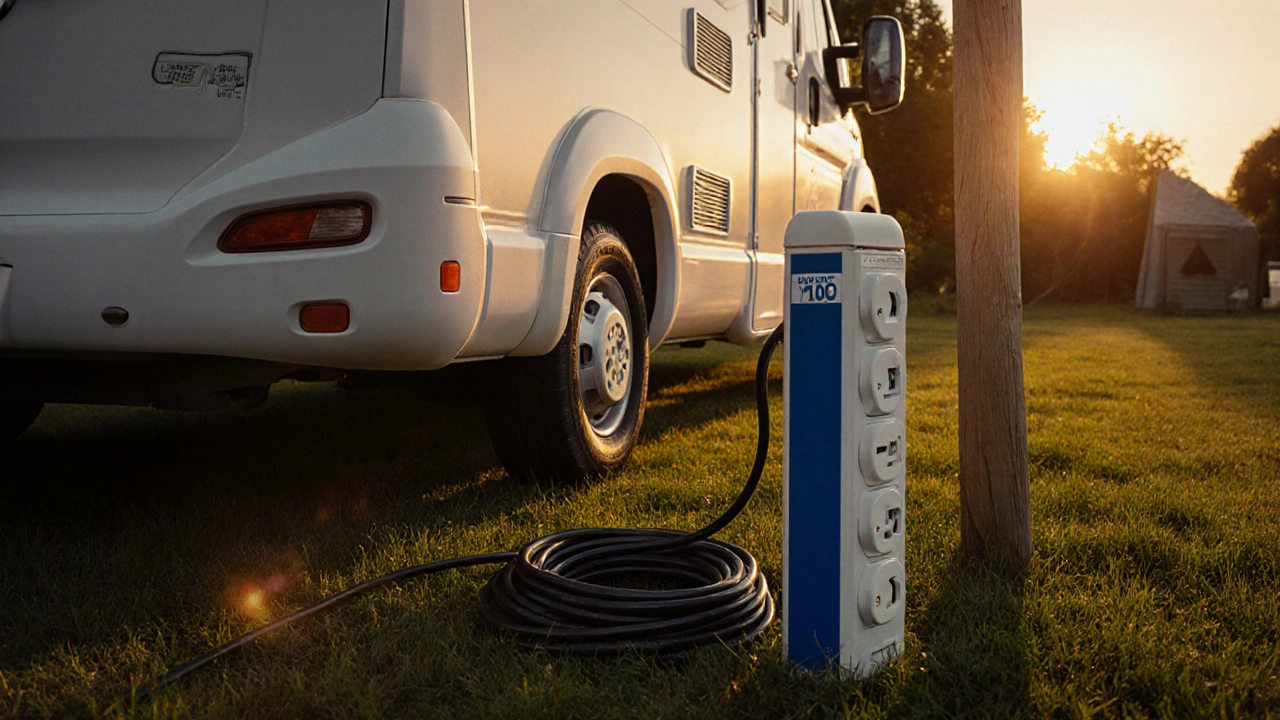Power Hookup for Motorhomes: What You Need to Know
When you’re on the road in a motorhome, a power hookup, a direct electrical connection to a campsite’s grid supply. Also known as electric hook-up, it’s what keeps your fridge cold, your lights on, and your phone charged without draining your batteries. Most UK campsites offer this as a standard feature, but not all hookups are the same. Some give you 10 amps, others 16 amps — and that difference affects how many appliances you can run at once.
Understanding campsite power, the electrical supply provided at designated camping areas means knowing what your motorhome can handle. If you’ve got a large fridge, air conditioner, or electric kettle, you’ll need a higher amp hookup. A basic 10-amp connection might be fine for LED lights and charging devices, but it’ll trip if you try to run a microwave and heater together. Many newer motorhomes come with built-in power management systems to help avoid overloads — but if yours doesn’t, you’ll need to plan ahead.
Not every spot you stop at will have a power hookup, a direct electrical connection to a campsite’s grid supply. That’s where off-grid power, running your motorhome without connecting to external electricity comes in. Solar panels, portable power stations, and generator use become essential. You’ll see posts here that break down how to pick the right solar setup, whether a lithium power bank is worth the cost, and how to stretch your battery life when you’re tucked away in a quiet forest.
And it’s not just about plugging in. There’s safety too. UK campsites have rules about cable types, socket ratings, and how far you can run your lead. Using the wrong cable or overloading a socket isn’t just risky — it’s against the rules. You’ll find guides here on what to look for in a proper 16-amp lead, how to spot a faulty socket, and why you should never daisy-chain extension cords.
Some people think power hookup means you don’t need anything else. But that’s not true. Even when you’re plugged in, your leisure battery still needs charging, and your inverter still needs to manage the flow. That’s why many experienced motorhomers carry a portable power station — not as a backup, but as a buffer. It lets you run small devices without draining the main battery, even when you’re connected.
Whether you’re staying at a busy family site with 16-amp hookups or a quiet woodland spot with no power at all, knowing how your motorhome uses electricity makes your trip smoother. You won’t be stuck in the dark, your food won’t spoil, and you won’t waste money on unnecessary gear. The posts below cover everything from real-world power usage examples to the cheapest ways to upgrade your system — all based on what actual motorhomers in the UK are doing right now.
